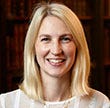What do we mean by the Manuscript Collections?
The word manuscript has its roots in the Latin manu scriptus, which translates as ‘written by hand’. Manuscripts include material produced before the development of printing technologies, but also after, as handwriting remained important for communication and reproduction. Manuscripts appear in numerous physical formats, including but not limited to tablets, scrolls, rolls and in book form (often referred to as a codex). Materials that manuscripts appear on include clay tablets, papyrus, linen, parchment, paper, wood, palm leaf, bone, bamboo and bark.
The Library’s manuscript collections cover more than fifty languages, including all the major European and Middle Eastern languages, and numerous Far Eastern ones. They span five millennia and the subject range is vast, encompassing literary, historical, antiquarian, genealogical, biblical, devotional, ritualistic, medical, scientific, legal and administrative texts.
Our manuscript collections are generally organised by language. In some cases, this classification is under the majority language as a number of manuscripts contain more than one. We have particular strengths in the following areas: Ancient texts, Book art, Hebraica, Medieval and Early Modern texts, Middle Eastern manuscripts, and Modern European manuscripts. Below is a summary of each area and advice on how to access them.
Ancient texts: which includes collections of Sumerian and Akkadian cuneiform clay tablets, Egyptian and Greek Papyri.
Book art: which encompasses illustrated, illuminated and calligraphic manuscripts across the collections, particularly within our Latin, French, Greek, English, Italian, Arabic, Persian, Armenian, Hebrew and Ethiopic collections. There are also many original bindings, medieval jewelled book covers, and ivory carvings.
Hebraica: significant collections, which comprise of 10,600 fragments from the Genizah of the Synagogue of Elijah in Old Cairo, along with numerous Hebrew and Samaritan manuscripts.
Over 500 Medieval codices and numerous Early Modern texts across all the European language collections. The Latin manuscripts particularly contain examples from most of the major monastic centres of manuscript production but also numerous examples of the later output of secular workshops.
Middle Eastern manuscripts (especially Islamic and Christian cultures) including Arabic, Persian, Turkish, Syriac, Armenian and Coptic.
Modern European Manuscripts, especially strong in our collection of English manuscripts which includes collections of letters and papers relating to military, political, industrial, social and local history, literature, art, and the history of Dissent.
Finding Manuscript Material
The Guide to Special Collections provides an overview of our manuscript collections, arranged by language.
Very few of our manuscript collections have detailed online catalogues. We are working hard to improve the situation, but in many cases, we rely on printed catalogues published in the 20th century. This alphabetical list directs you to catalogues available in PDF format. Many manuscripts are presented with full descriptions in Manchester Digital Collections, especially the Latin, Hebrew and Persian collections. Some notable exceptions are the English manuscripts listed in Elgar and many of our Persian, Arabic and Syriac manuscripts listed in Fihrist.
For advice on material not covered by the online catalogues, or for any other enquiries relating to the manuscript collections, please contact us.
Additional Resources:
Made in Manchester tells the story of Manchester using items from our Special Collections
How do I find out more about Special Collections?
Introducing Special Collections
Our Catalogues:
How to Search Special Collections
How to find Special Collections in Library Search
Digital Collections:
How to use Manchester Digital Collections
Images reproduced with the permission of The John Rylands University Librarian and Director of the University of Manchester Library. All images used on this page are licenced via CC-BY-NC-SA, for further information about each image, please follow the link in the caption description.
If you are interested in using any material from Special Collections please get in contact with our Reading Room staff: uml.special-collections@manchester.ac.uk
